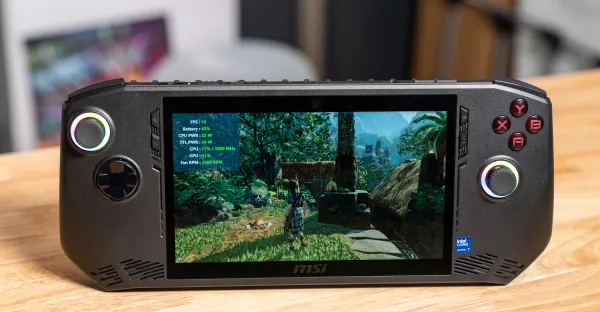Steam Deck OLED/SteamOS Review: So Close!
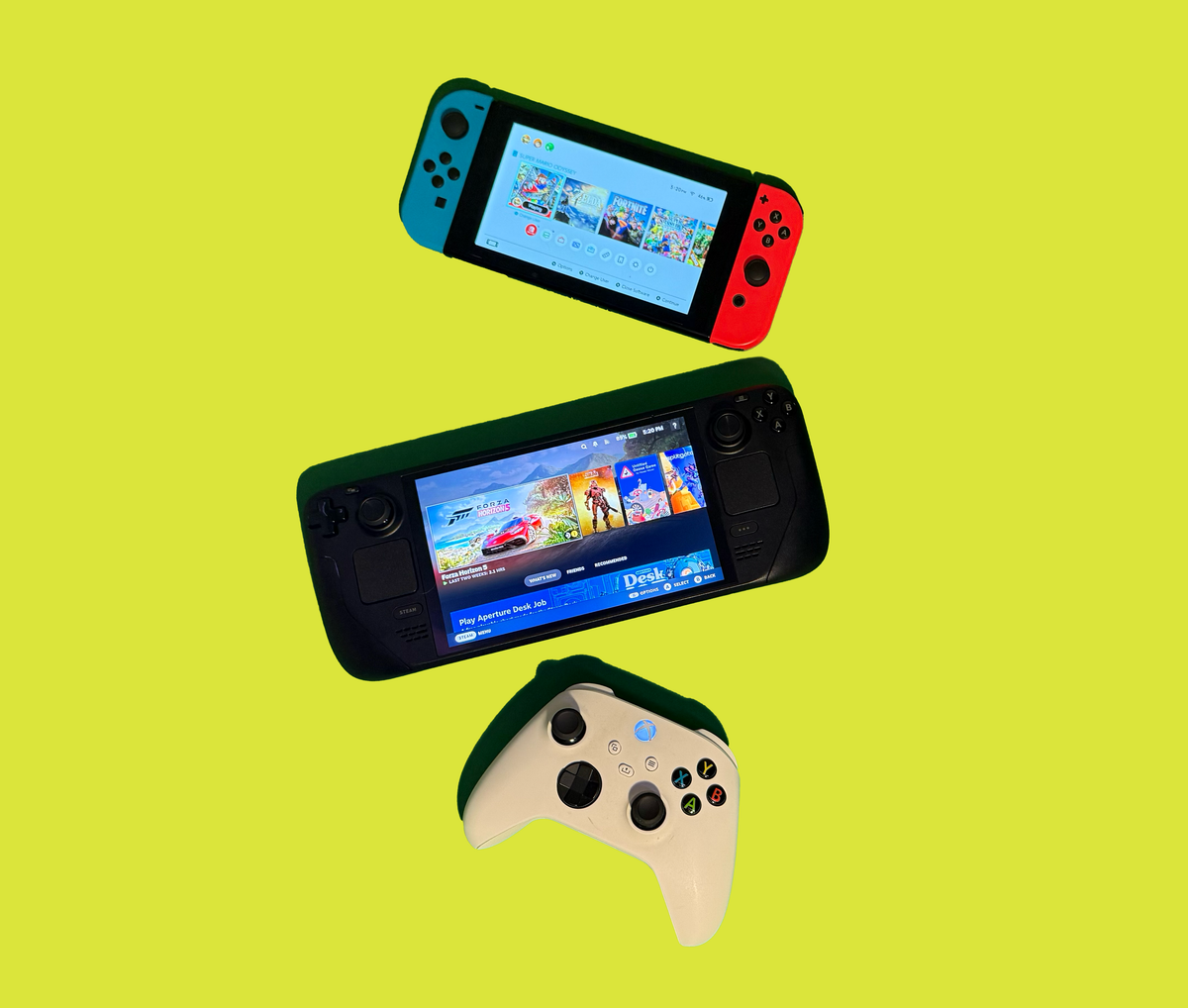
It really is amazing.
The Steam Deck OLED is amazing. It is probably my favorite console to date (maybe other than the Switch). The screen is amazing, the performance is great, and the battery life is tolerable for what I play on it. My slight issue with the console is, of course, SteamOS.
The console has kind of been covered to death, but I still have some thoughts on it as a whole. As I said in my first impressions, it really is amazing. The hardware is incredible. The screen might almost be as lifelike as the Tandem OLED on my iPad Pro, and it obviously trounces the Nintendo Switch. The colors pop so much on it that it doesn't really feel like I'm gaming. It just feels like I'm looking through a window into the game I'm playing.
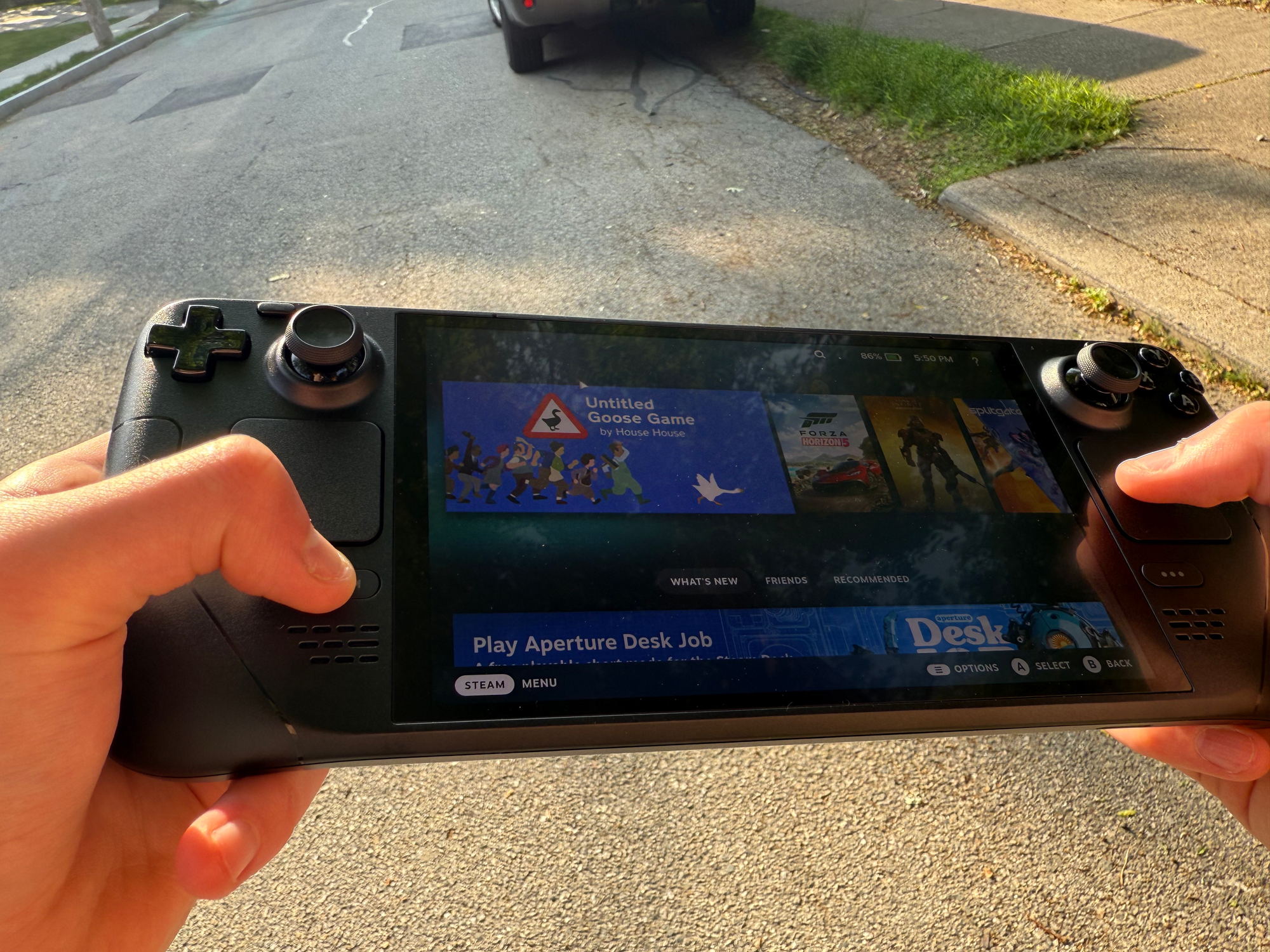
The controller itself (which many have overlooked) feels great. The ABXY buttons are tactile and responsive and the triggers are so nice. The trackpads are a level above though. I'm not necessarily referring to the actual feel of the surface of the trackpads, I mean the haptic response from them. It is so nice to actually know if you have moved the cursor or not, and this does a great job of it. Honestly, other than the surface of it (which is not bad, just not as good as Apple), might be on par with Apple's trackpad haptics. It really is that good.
The performance of the console is where things get better, and also more confusing. I wanted to see how the console would fare in each type of scenario with these games: graphics quality and well optimized games (Untitled Goose Game), accuracy and control (Forza Horizon 5), and pure horsepower (Halo: Infinite).
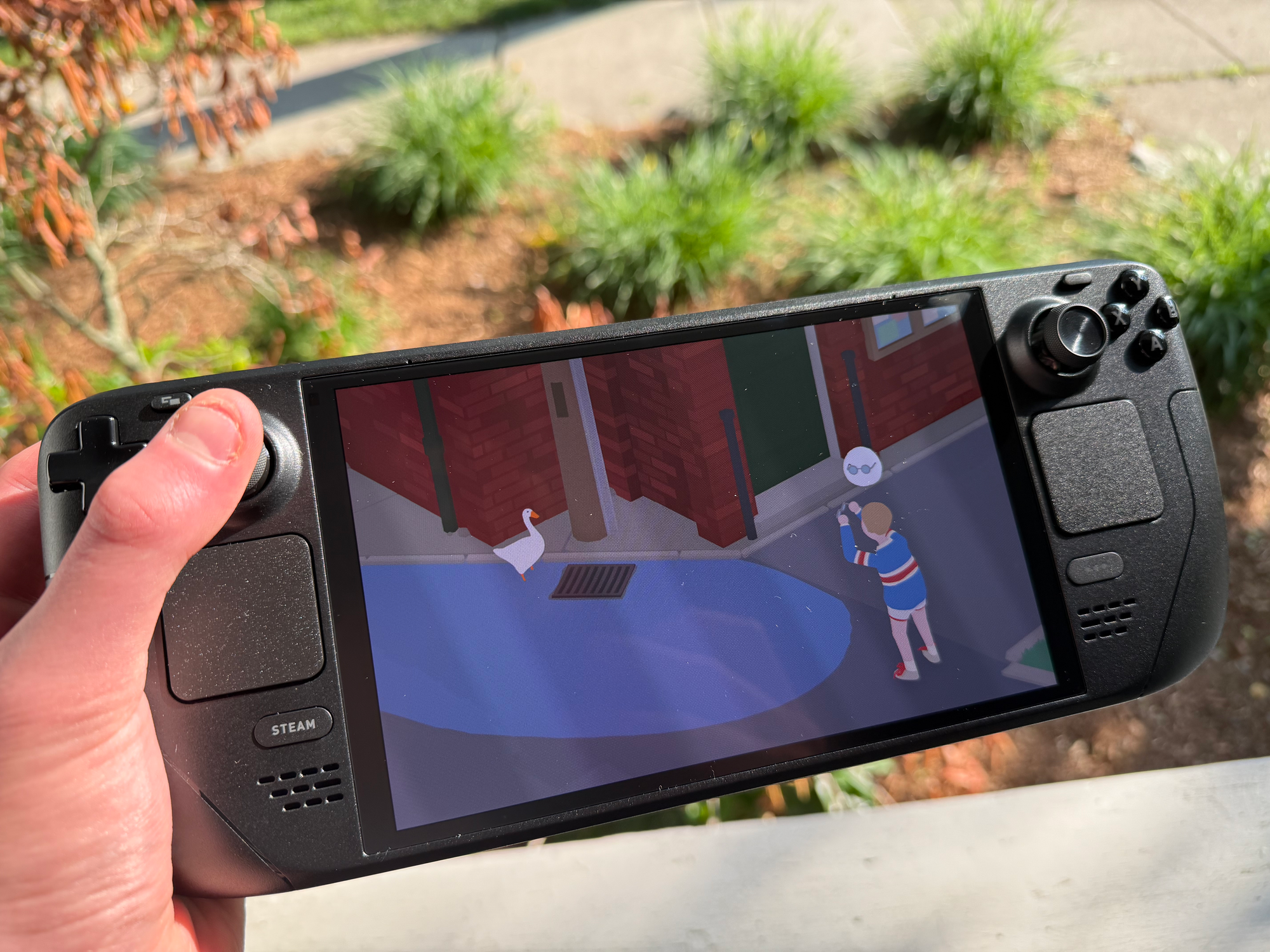
In Untitled Goose Game, there is not much bad for me to say about it. The colors of the game popped and looked very nice on the OLED display. It is a pretty straightforward game, so it is a great representation of how the graphics CAN look. The game ran extremely smoothly, with no hiccups or issues. It was essentially locked at 90 FPS the entire time I played (it was set to 800p and "Prettiest" Quality). The GPU was at around 50% usage and the CPU was at 35-45% usage. What's crazy is that it was only using around 1.2GB of VRAM and 3.5GB of RAM the whole time. Plus, the wattage hovered around 2-2.5 watts. This is probably because of just how well optimized this game is for basically every machine and especially for the Steam Deck.
What was so great about Untitled Goose Game was how it felt to play. Yes, it obviously looked amazing, but it also felt so perfect for the Steam Deck. The snappiness of the control input, combined with the 90 Hz display made it feel just as good to play as it does on my PC.
Forza was definitely not as smooth as Untitled Goose Game, but it was still a great experience. I spent easily the most time playing Forza on the Steam Deck than I did with any other game. I set it to medium at 800p. It was at a lower frame rate than Untitled Goose Game, and it was around 50-70 FPS. It felt like a somewhat consistent frame rate, but it did depend on what I was playing within the game. It did use a lot of RAM and VRAM, but it was as expected for a game like this. It never felt like something felt off and it was using too much power for barely any performance. The fan was spinning a lot but not too audibly. Similar to how it was with Halo (which I will get to soon), despite it being around 60 FPS, it felt like the frame times were not as good. It was stuttery and inconsistent sometimes, but not always. Its cause being bad frame times is speculation, but it still doesn't help the experience. It is pretty hard to tell what is affecting what in these games. Still, it had good graphics and performance overall.
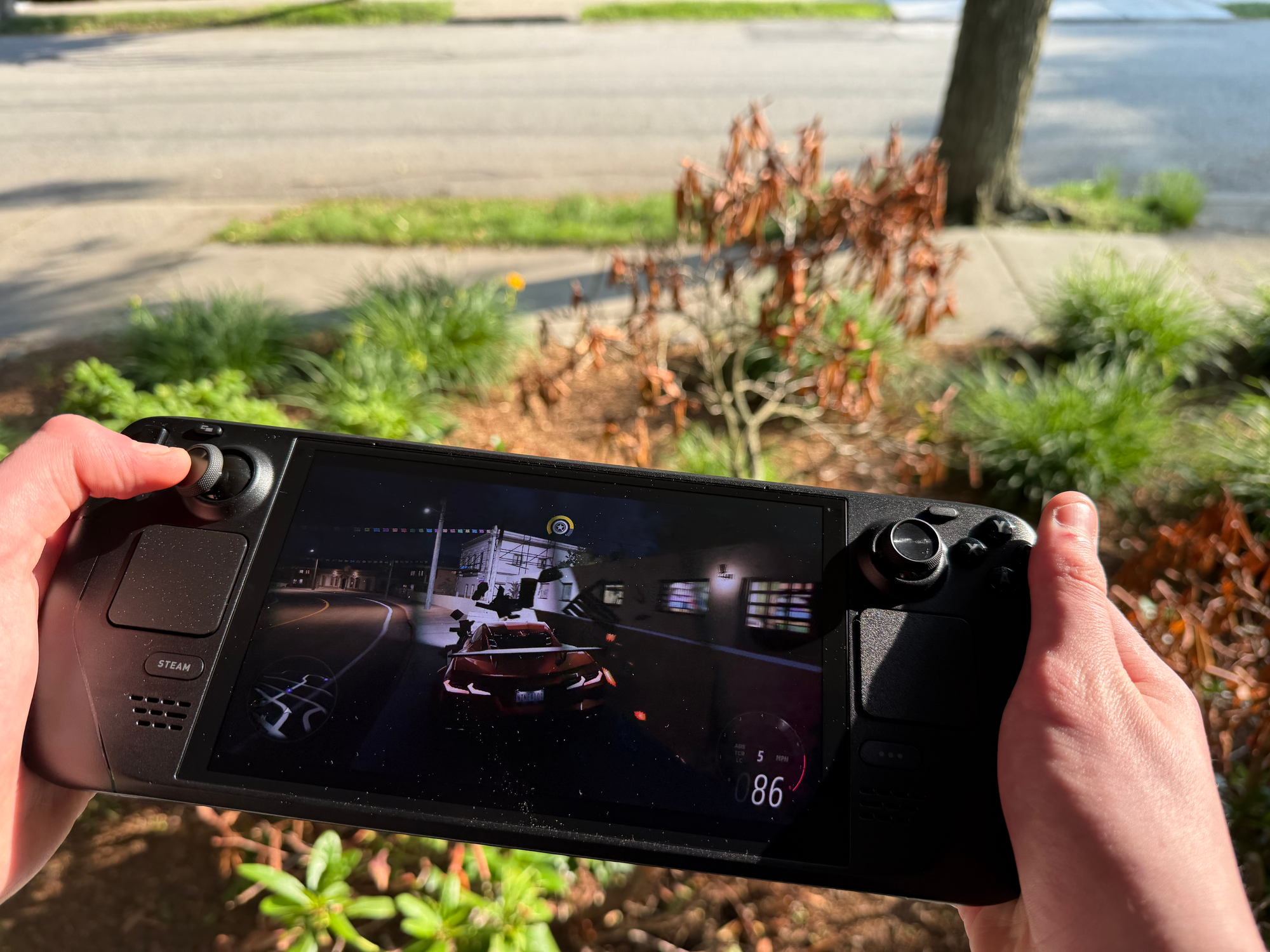
My experience with Forza was amazing and it was probably my favorite game to play on the Steam Deck. Despite loving playing it on the Steam Deck, I can feel how it is somewhat of a middle ground of games that are extremely well optimized (like Untitled Goose Game) and ones that aren't as meant for the console (Halo).
In Halo, it was a similar story as the others, but it was somewhat difficult to gauge if it was a hardware issue or a SteamOS issue. From first starting up the game, I could tell it wasn't going to be the same experience as it was with Untitled Goose Game. It was auto-set to low presets, which was okay for a little bit, but it became annoying when it was difficult to see what some objects were, so I quickly changed it to Medium. The frame rate was unlocked, but, frankly, you won't be pushing more than 75 FPS (on any preset) anyways. At Medium, it hovered around 58-65 fps, with occasional drops and hiccups. This mostly happened when I was moving a lot or when there were a lot of people online in one place. Oddly enough, no matter the preset, the system always used around 6 GB of VRAM and 10-11 GB of RAM. At High, there was a noticeable drop in frame rate to around 40-45 with it more often dropping to around 37 FPS. It felt noticeably less smooth and drops felt more commonplace. I tried to set it to Ultra, but it uses too much VRAM and didn't let me.
The biggest thing for me with Halo is how, even on Medium, despite feeling okay in other games at 60 FPS, it still felt stuttery. My guess is that it is due to the Proton layer being implemented to allow this Windows game to be played on SteamOS. It was the same kind of feeling that I felt when I played Forza.
The biggest takeaway for me about my whole experience with the device is that SteamOS (and the Steam Deck) are in an odd middle ground. It CAN support many games, but not all of them. Plus, the ones that do often need Proton to be able to function at all. This seems to hamper the performance and worsen the experience. It is sad, because as a whole, the operating system is a joy to use and is more user friendly than basically any UI for gaming. But, the performance is hurt by the fact that the gaming industry doesn't want to move to Linux (yet).
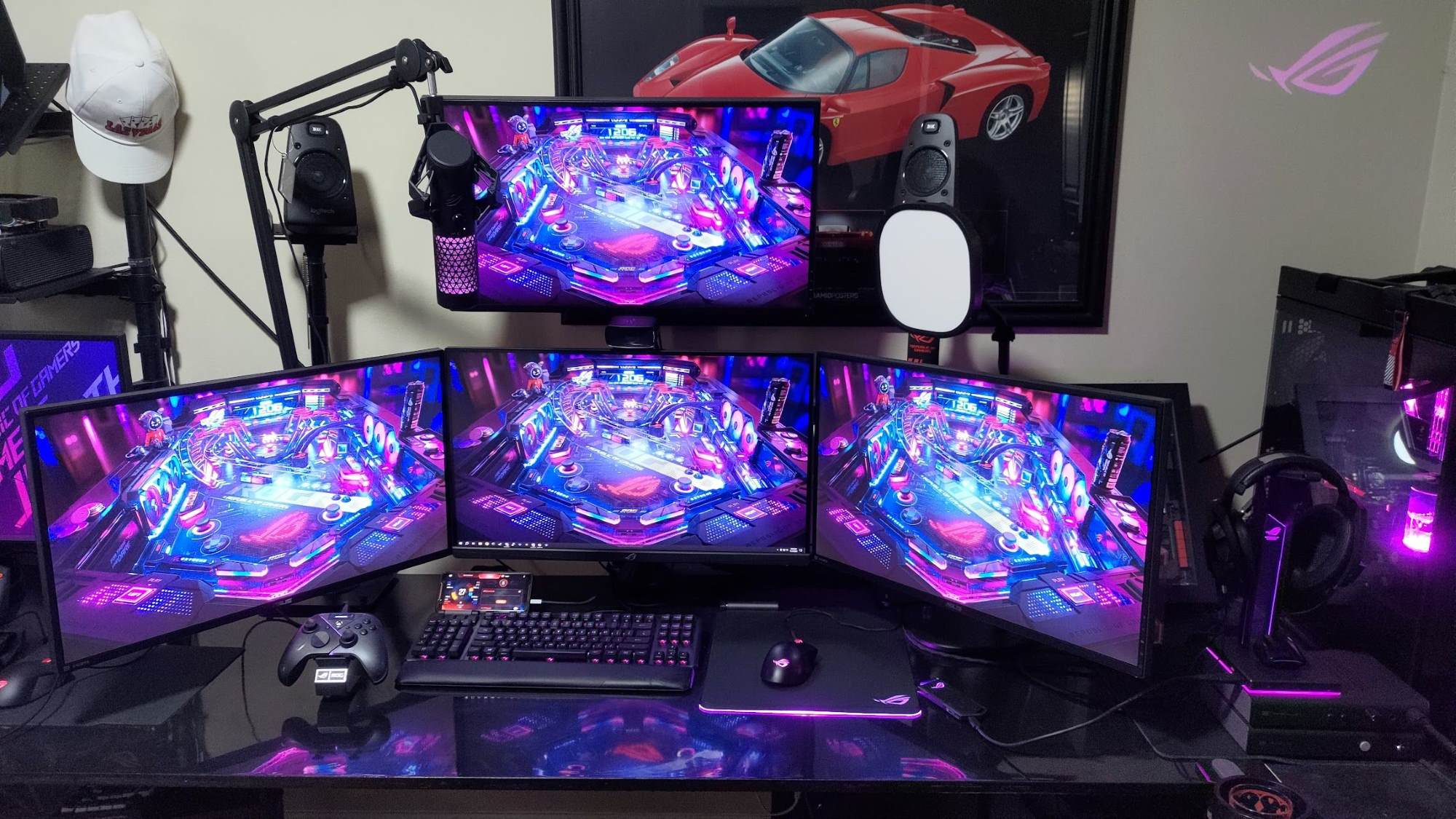
I think that SteamOS is in an unfortunate middle period at the moment. It is halfway towards being a full-fledged PC, and halfway towards being a console. It isn't all the way to being a PC because it can't run all games, but it isn't all the way to being a console because it is significantly more powerful than one.
This period for SteamOS is a difficult one, because it is hard for it to please PC gamers. But, with the launch of the Lenovo Legion Go S and Valve allowing for you to install SteamOS on basically anything, developers might want to bring their games to SteamOS.
My experience with the Steam Deck was a great one. It felt so freeing to be able to bring this kind of performance with me anywhere. But, it felt frustrating that I couldn't install every game. Still, the Steam Deck OLED is a great console, and I can't wait for the day that developers bring their games to this console.

